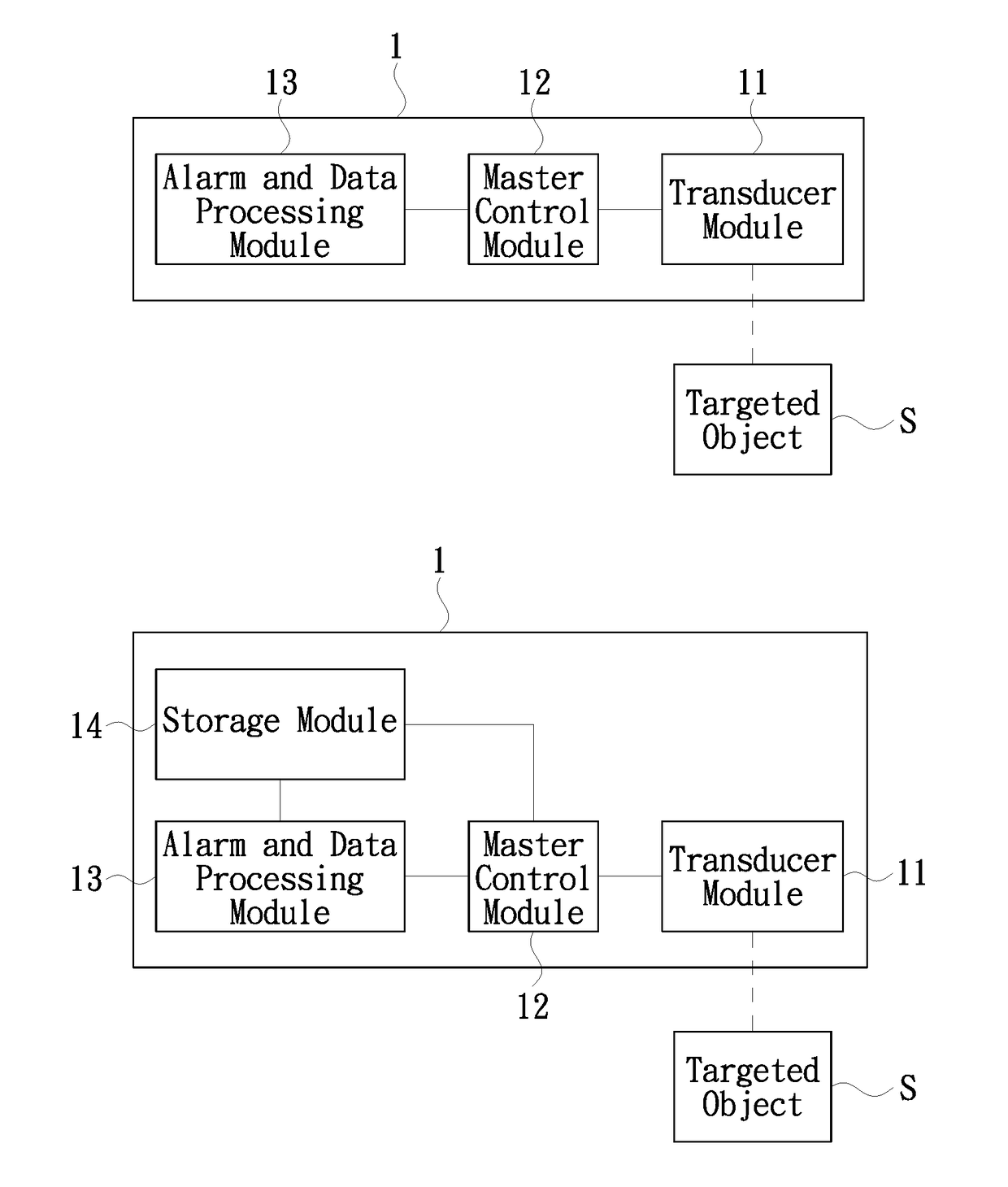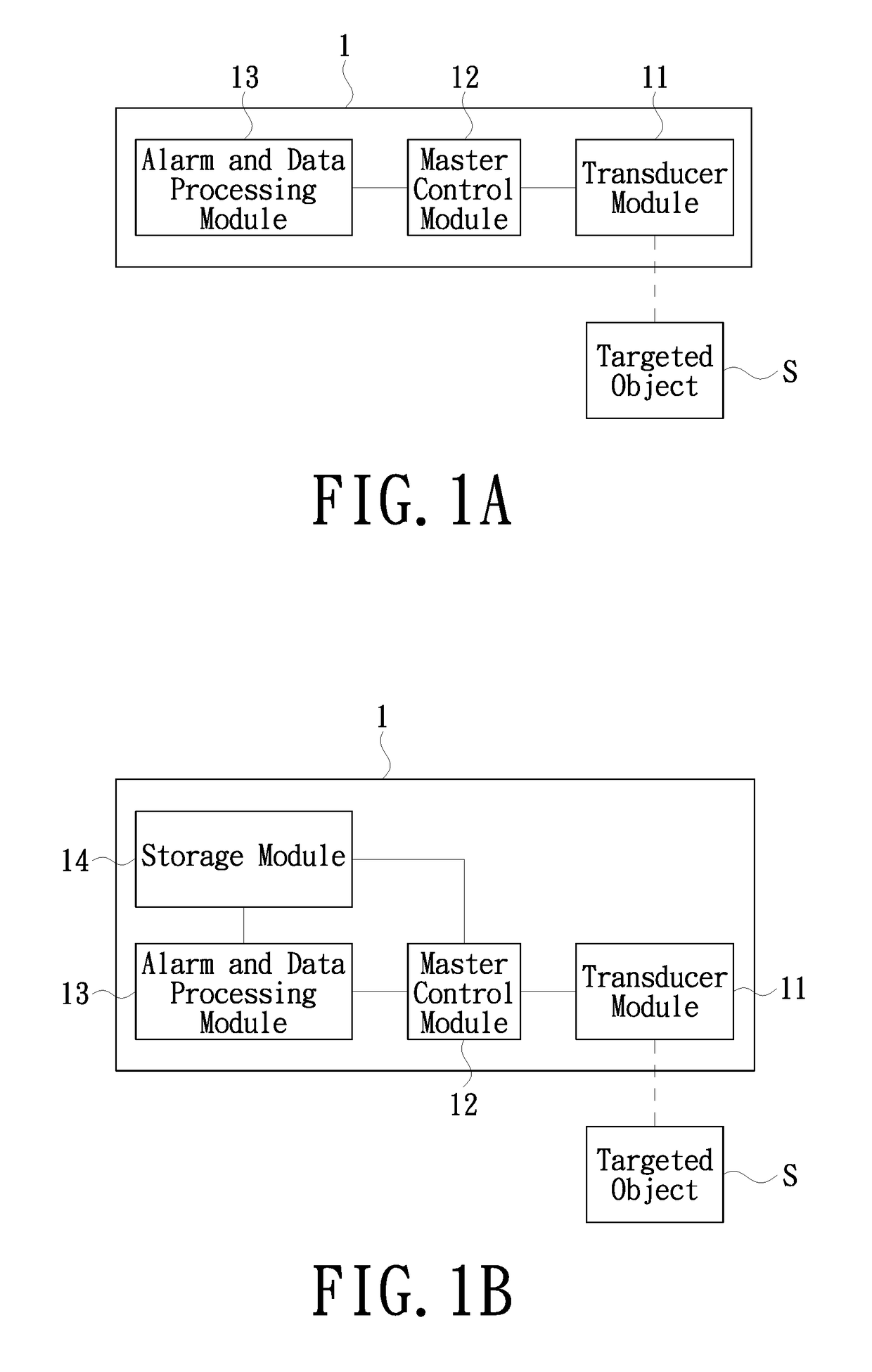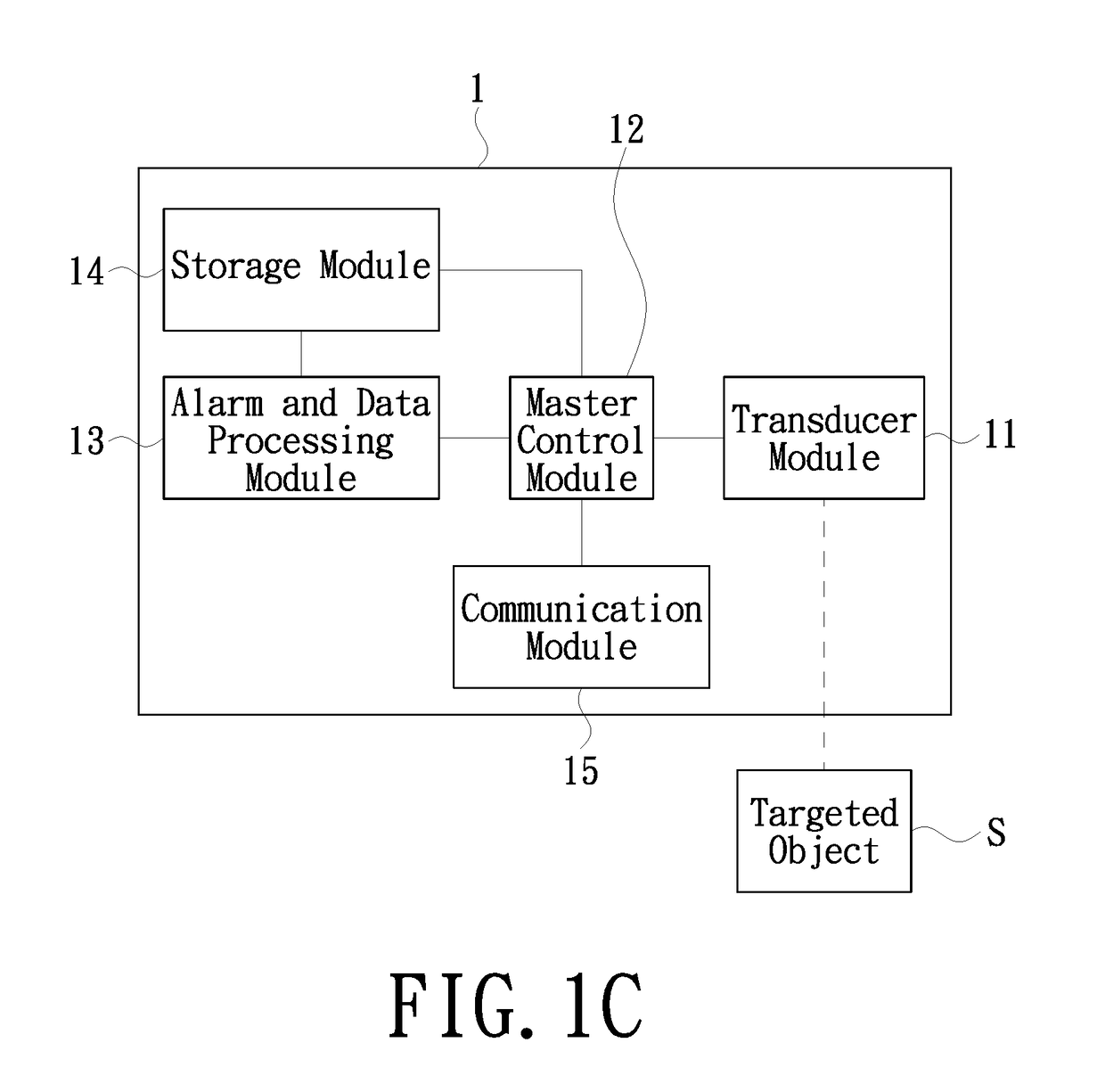Data collection and processing apparatus with Anti-theft function, system using the same, and data collection and processing method thereof
- Summary
- Abstract
- Description
- Claims
- Application Information
AI Technical Summary
Benefits of technology
Problems solved by technology
Method used
Image
Examples
embodiments
[0072]Referring now to FIGS. 3 and 4, which illustrate the perspective view and exploded view of an anti-theft data collection and processing apparatus according to an embodiment of the present invention. As shown in FIG. 3, the data collection and processing apparatus of the present embodiment includes a transducer 31 and a data processing center 32.
[0073]As shown in FIG. 3, the targeted object S is a cell phone and is attached to the transducer 31. The targeted object S also communicates with the transducer 31 via a sensor wire 34, which also provides electricity to the targeted object S. The data collection and processing apparatus 1 is connected to the power source 37 via an electrical wire 35. The data processing center 32 is connected to the transducer 31 via two wires, one of which is a data wire 33 for data transmission and the other is a power wire 36 for providing electricity to the transducer 31. The base 38 is adopted for supporting the transducer 31 and the targeted obj...
PUM
 Login to View More
Login to View More Abstract
Description
Claims
Application Information
 Login to View More
Login to View More - R&D
- Intellectual Property
- Life Sciences
- Materials
- Tech Scout
- Unparalleled Data Quality
- Higher Quality Content
- 60% Fewer Hallucinations
Browse by: Latest US Patents, China's latest patents, Technical Efficacy Thesaurus, Application Domain, Technology Topic, Popular Technical Reports.
© 2025 PatSnap. All rights reserved.Legal|Privacy policy|Modern Slavery Act Transparency Statement|Sitemap|About US| Contact US: help@patsnap.com



